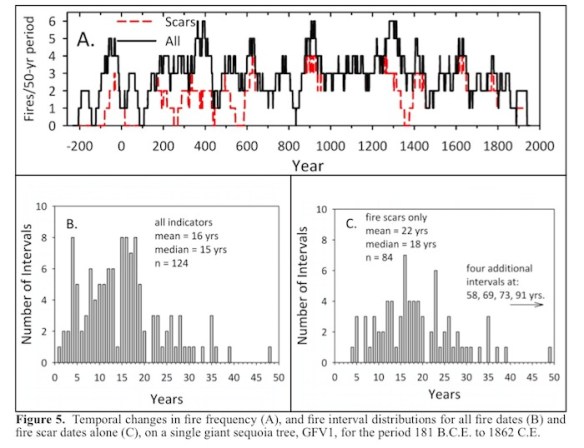“Medieval Warm Period seen in western USA tree ring fire scars“. Anthony Watts darkly hints that “despite what some would like you to believe, the MWP was not a regional ‘non event’.” Then he copy-and-pastes a University of Arizona news release about how Giant Sequoias reveal fire histories in the Sierra Nevada. (I’ll try to ignore his reflexive figure comparing the global “Mann/IPCC” temperature history to the European “historical” temperature history.)
This is not a climate paper, it’s about historical fire frequencies and even implicitly recognizes the progression of global warming. You can read Multi-Millennial Fire History of the Giant Forest, Sequoia National Park, California, USA (Swetnam, et. al, 2009) at the Fire Ecology journal web site (abstract or PDF). Anthony didn’t.



Giant Sequoias Yield Longest Fire History from Tree Rings
The paper itself is available without a paywall.
The Medieval Period discussion consists of:
This location, if its warm enough, would still be a somewhat redundant listing in skeptic-site co2science.org’s informal list of global Medieval Warm sites. There are six or seven other listings in the various categories, that cover nearby areas.